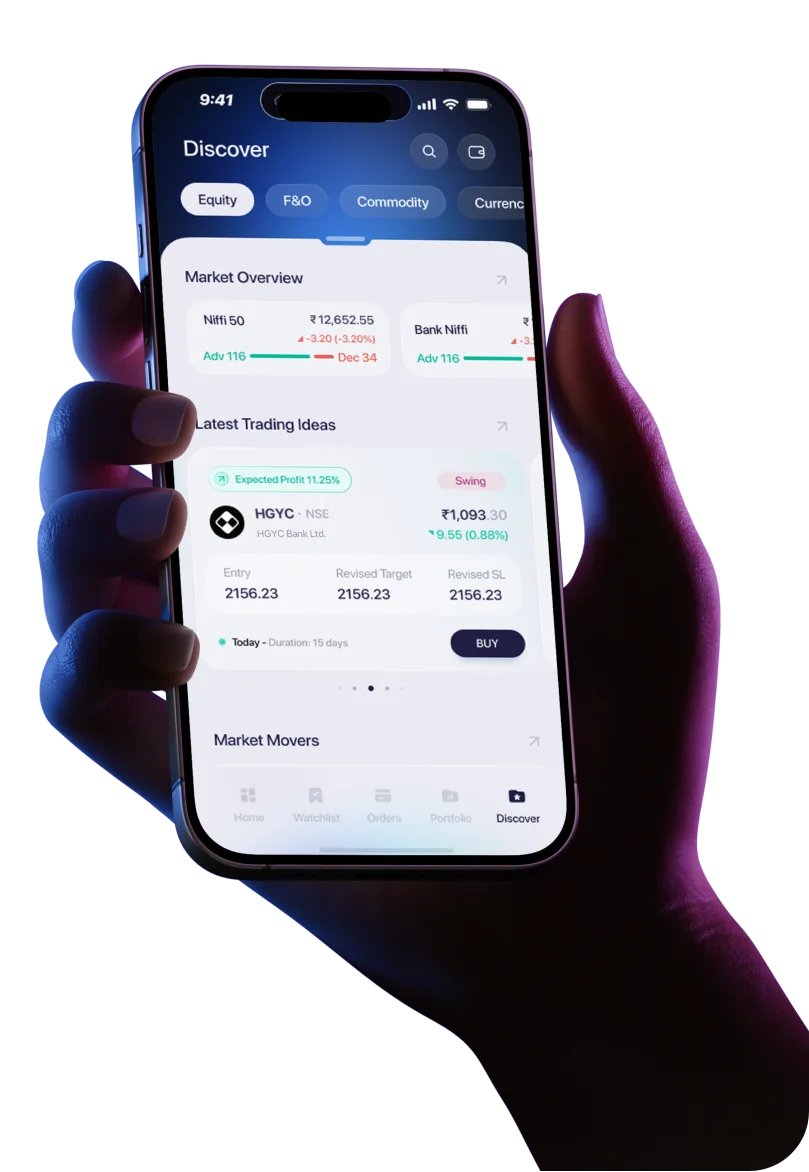When it comes to analyzing stocks, financial ratios act as guiding lights. They help investors cut through the noise and focus on what truly matters: performance and value creation. Among these ratios, Return on Equity (ROE) stands out as a key profitability metric. Whether you're just beginning your investment journey or sharpening your analysis toolkit, understanding ROE can give you a distinct edge.
What is ROE (Return on Equity)?
Return on Equity, or ROE, measures how efficiently a company is using its shareholders’ capital to generate profits. In simpler terms, it tells you how much profit a company makes for every rupee of shareholders’ equity.
ROE Formula and Calculation
The standard formula to calculate ROE is:
ROE = Net Income / Shareholders' Equity
Here’s a quick example:
- Net Income: ₹5 crore
- Shareholders’ Equity: ₹25 crore
ROE = ₹5 crore / ₹25 crore = 20%
This indicates that the company earns 20 paise for every rupee of shareholder equity.
Naturally, a higher ROE suggests better efficiency in using investor funds.
ROE isn’t just a number - it’s a snapshot of how well a company rewards its equity shareholders.
Where to Find This Data
You can find both net income and shareholders’ equity in a company’s annual report or financial statements - specifically in the income statement and balance sheet.
Why is ROE Important in the Stock Market?
ROE is a favorite among analysts and investors for good reason. It offers a direct insight into a company’s ability to generate profits from the money shareholders have invested.
Profitability Check
ROE shows how profitable a company is relative to its equity. Companies with high ROE are generally more efficient and potentially more rewarding investments.
Peer Comparison
ROE helps you compare companies within the same sector. For example, if you’re comparing two FMCG firms, the one with a consistently higher ROE may have better management efficiency or stronger business fundamentals.
Investment Decision-Making
A stable or growing ROE over time can signal a company that creates long-term value - one that might be worth your investment.
Interpreting ROE Values
Now that you know how to calculate ROE, the next step is interpreting it.
What’s a Good ROE?
There’s no universal benchmark, as it differs from sector to sector, but in general:
- ROE above 20% is considered strong
- 10-20% is acceptable
- Below 10% might indicate underperformance
However, context matters. Industries like IT and pharma tend to have higher ROEs due to lower capital intensity, while sectors like manufacturing or utilities may have modest ROEs. That’s why there is no specific benchmark for the same.
High ROE: Always Good?
Not necessarily. A very high ROE could be due to low equity, often because of high debt. This leads to an artificially inflated ROE and greater financial risk. Always check the debt-to-equity ratio alongside ROE for a balanced view.
ROE vs Other Financial Metrics
To get a well-rounded understanding of a company, ROE should be used with other metrics.
- ROA (Return on Assets) shows how well assets are used to generate profit.
- ROI (Return on Investment) evaluates returns on specific investments or projects.
Compared to these, ROE specifically measures return generated for equity shareholders. It reflects profitability more from the owner’s viewpoint.
The DuPont Model: A Deeper Dive into ROE
To understand what drives ROE, investors often turn to the DuPont Analysis, which breaks ROE into three components:
ROE = Net Profit Margin × Asset Turnover × Equity Multiplier
Net Profit Margin: How much profit the company makes per rupee of sales.
Asset Turnover: How efficiently the company uses its assets to generate revenue.
Equity Multiplier: A measure of financial leverage (use of debt).
By breaking ROE into these components, you can see whether a company’s high ROE comes from strong operations, efficient use of assets, or just high debt.
Limitations of ROE
While ROE is a valuable metric, it has its limitations:
Distortion Due to Debt
A company can increase ROE by taking on more debt, reducing equity. While this improves short-term ROE, it increases long-term financial risk.
Negative or Fluctuating Equity
If a company has negative equity (liabilities > assets), the ROE formula becomes unreliable or misleading. Similarly, companies with erratic profits may show volatile ROEs.
Not a Standalone Metric
ROE should never be used in isolation. Combine it with debt ratios, cash flow analysis, and growth indicators to make informed decisions.
Summary
Return on Equity is more than just a profitability ratio—it's a window into how effectively a company turns investor capital into profit. It helps new and seasoned investors alike evaluate performance, compare companies, and identify potential red flags.
Here’s a quick recap:
- ROE = Net Income / Shareholders’ Equity
- A consistently high ROE can signal strong business fundamentals.
- DuPont Analysis helps uncover what drives ROE—profitability, efficiency, or leverage.
- Be cautious of debt-inflated ROE and always cross-check with other metrics.
ROE is a powerful tool, but like any metric, it’s most effective when used as part of a broader analysis




 Easy & quick
Easy & quick
Leave A Comment?